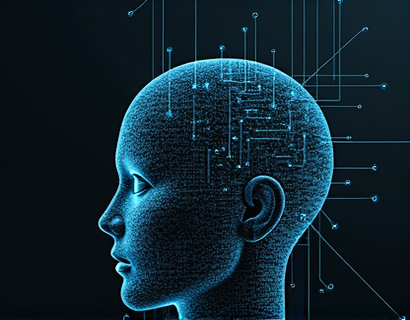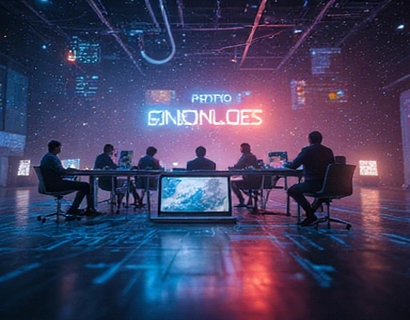AI-Powered Cosmic Learning: Interactive Exploration with Customizable Settings for Educators and Space Enthusiasts
In the realm of education and space exploration, the integration of artificial intelligence (AI) has opened new avenues for interactive and personalized learning experiences. This article delves into the concept of an AI-powered learning tool designed to make space and astronomy accessible, engaging, and customizable for both educators and space enthusiasts. By leveraging advanced AI technologies, this tool offers a unique platform for exploring the vast and intricate universe, tailored to individual interests and learning styles.
The core functionality of this AI-powered learning tool revolves around interactive explorations of celestial phenomena and astronomical concepts. Users can embark on a personalized cosmic journey, guided by an intelligent system that adapts to their knowledge level, preferences, and learning pace. This adaptive learning environment ensures that whether a user is a beginner or an advanced space enthusiast, they receive content that is both challenging and informative.
Customizable Learning Settings
One of the standout features of this AI-powered tool is its customizable settings. Users can adjust various parameters to tailor their learning experience. These settings include the depth of information, the type of content, and the pace of the exploration. For instance, a user can choose to focus on specific areas of astronomy, such as planetary science, astrophysics, or space exploration history. This flexibility allows educators to create customized lesson plans that align with their curriculum goals, while space enthusiasts can delve into topics that spark their curiosity.
Moreover, the tool offers different modes of interaction, such as text-based explanations, interactive simulations, and multimedia presentations. Users can switch between these modes based on their learning preferences, ensuring a comprehensive understanding of complex concepts. For educators, this means they can design engaging and diverse lesson plans that cater to the varied learning styles of their students.
Interactive Explorations
Interactive explorations are a cornerstone of this AI-powered learning tool. Users can embark on virtual journeys through the solar system, explore distant galaxies, and witness cosmic events in real-time. These interactive experiences are not just visually stunning but also educational, providing detailed information about the objects and phenomena being explored. For example, users can select a planet and receive information about its composition, atmosphere, moons, and any ongoing missions.
The tool uses advanced 3D modeling and real-time data from space agencies to create immersive environments. Users can manipulate these environments, zooming in on specific features or adjusting lighting conditions to better understand the context. This level of interactivity makes learning about space not only fun but also deeply engaging, helping users retain information more effectively.
Personalized Learning Paths
The AI at the heart of this learning tool is capable of creating personalized learning paths for each user. By analyzing user interactions and performance, the AI identifies areas of strength and weakness, adjusting the content accordingly. For instance, if a user struggles with understanding black holes, the AI will provide additional resources and exercises to reinforce this concept. This personalized approach ensures that users progress at their own pace, without feeling overwhelmed or bored.
For educators, this feature is particularly valuable as it allows them to track the progress of their students and identify areas where additional support may be needed. The AI can generate reports that highlight these areas, enabling educators to tailor their teaching strategies effectively. This data-driven approach enhances the overall educational experience, making it more efficient and effective.
Educational Resources and Multimedia Content
The tool offers a rich repository of educational resources, including articles, videos, podcasts, and interactive simulations. These resources are curated to provide a comprehensive overview of various astronomical topics. Users can access these materials directly within the platform, creating a seamless learning experience. The multimedia content is designed to cater to different learning styles, ensuring that visual, auditory, and kinesthetic learners all benefit from the tool.
For educators, the availability of high-quality educational resources is a significant advantage. They can use these materials to supplement their lessons, create multimedia presentations, or assign homework that extends beyond the classroom. The platform also allows educators to upload their own content, fostering a community of shared learning and collaboration.
Real-Time Data and Updates
One of the most exciting aspects of this AI-powered learning tool is its ability to integrate real-time data from space missions and observatories. Users can stay updated with the latest discoveries and events in the field of astronomy. For example, the tool can provide live updates on new planetary discoveries, solar flares, or other cosmic phenomena as they occur. This feature not only keeps the content fresh and relevant but also inspires users with the dynamic nature of space exploration.
For educators, real-time data offers an opportunity to incorporate current events into their lessons, making the subject matter more relatable and engaging for students. It also encourages critical thinking and discussion, as users can analyze and interpret the latest findings together.
Collaborative Learning Features
Collaboration is a key component of effective learning, and this AI-powered tool supports various collaborative features. Users can join virtual study groups, participate in discussions, and work on group projects within the platform. The AI facilitates these interactions by providing structured discussion prompts, moderating conversations, and ensuring that all participants have equal opportunities to contribute.
For educators, these collaborative features enhance the classroom experience by extending learning beyond the physical classroom. Students can collaborate with peers from different locations, fostering a global learning community. The AI's moderation ensures that discussions remain focused and productive, helping students develop important communication and teamwork skills.
Accessibility and Inclusivity
Accessibility is a fundamental aspect of this learning tool. The platform is designed to be user-friendly and accessible to individuals with various abilities. Features such as text-to-speech, adjustable font sizes, and high-contrast modes ensure that users with visual impairments can fully engage with the content. Additionally, the tool supports multiple languages, making it accessible to a global audience.
For educators, this inclusivity means they can reach a wider range of students, including those with disabilities or those who speak different languages. It also aligns with educational standards that emphasize inclusive teaching practices, ensuring that all students have equal opportunities to learn and succeed.
Continuous Improvement and Updates
The AI-powered learning tool is not static; it continuously evolves based on user feedback and the latest advancements in AI and astronomy. The development team regularly updates the content, adds new features, and refines the AI algorithms to improve the learning experience. This commitment to continuous improvement ensures that the tool remains at the forefront of educational technology.
For both educators and space enthusiasts, this means they can rely on the tool to provide up-to-date and high-quality content. Educators can trust that the resources they use are current and accurate, while users can enjoy a learning experience that keeps pace with the rapidly evolving field of astronomy.
Conclusion
In conclusion, an AI-powered learning tool that offers interactive explorations and customizable settings represents a significant advancement in space education. By providing personalized learning paths, rich multimedia content, real-time data, and collaborative features, this tool makes space and astronomy accessible and engaging for everyone. Whether you are an educator looking to enhance your teaching methods or a space enthusiast eager to deepen your knowledge, this tool offers a unique and valuable resource. As technology continues to advance, the potential for innovative educational tools like this one is vast, promising a future where learning about the universe is more interactive, personalized, and exciting than ever before.










































